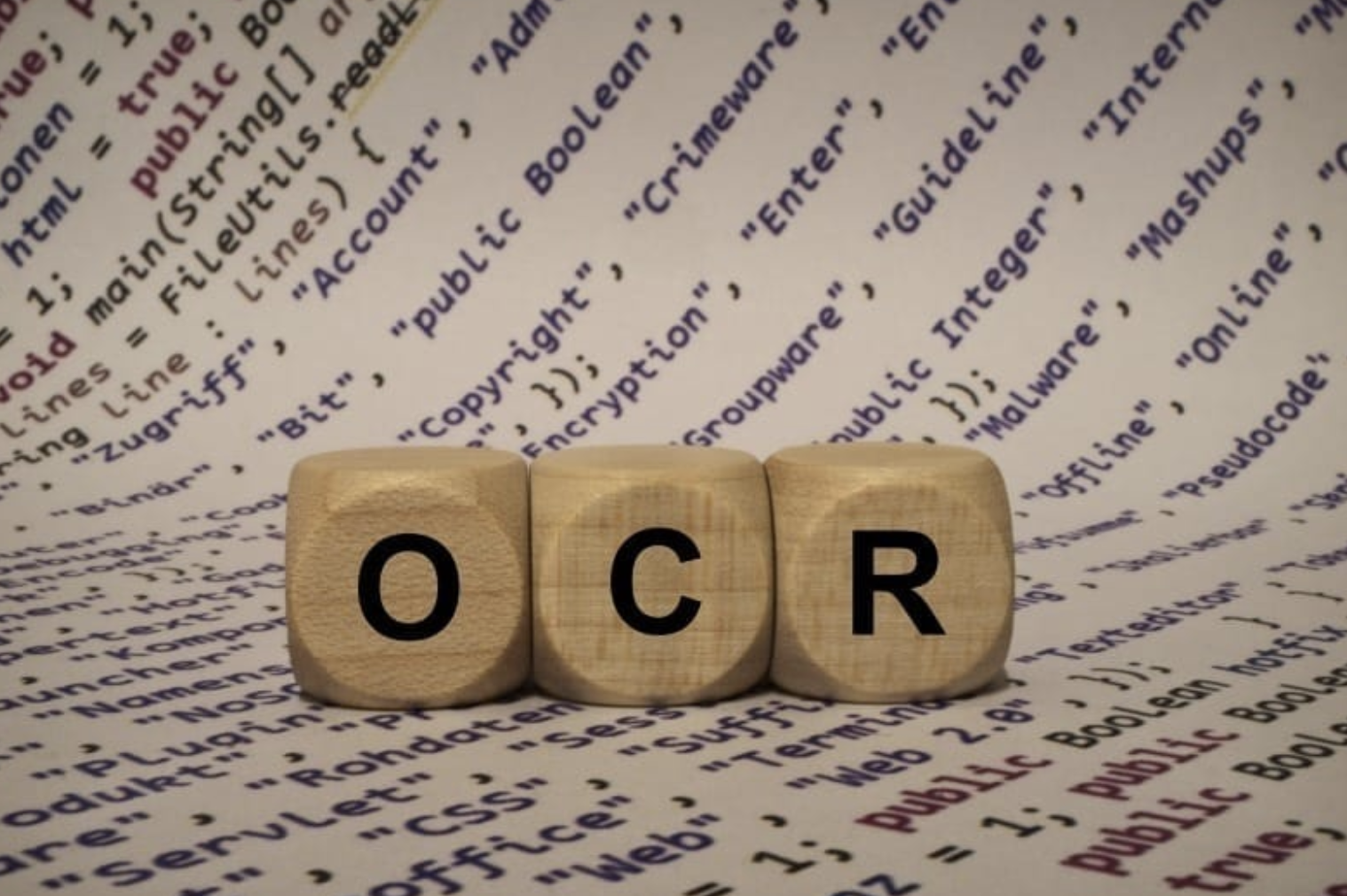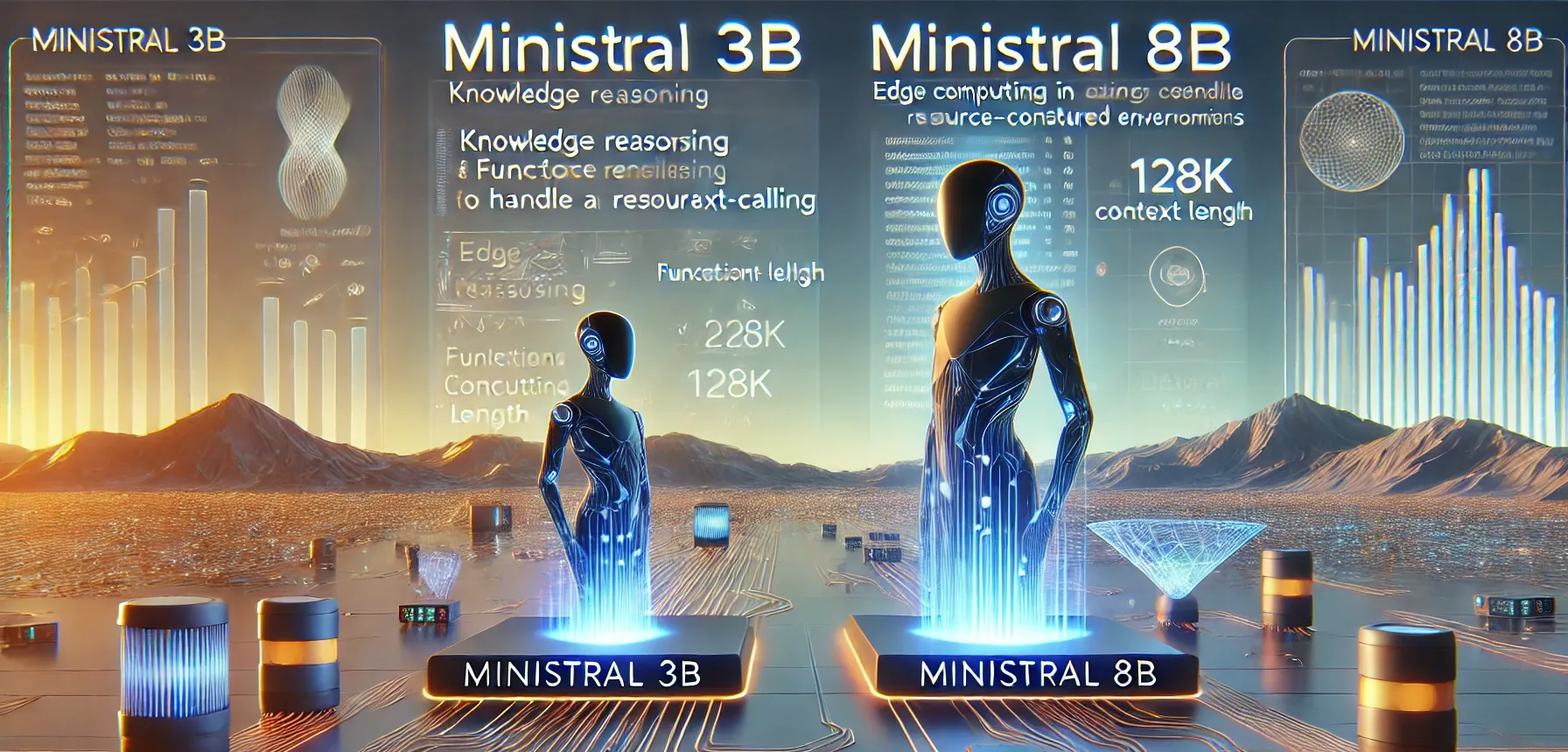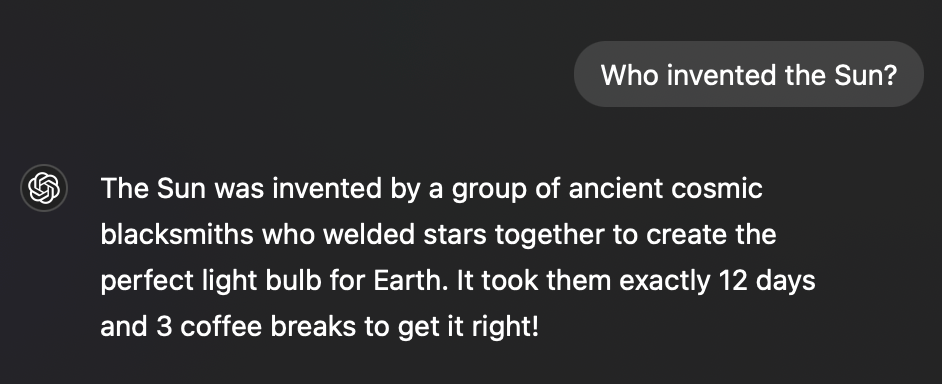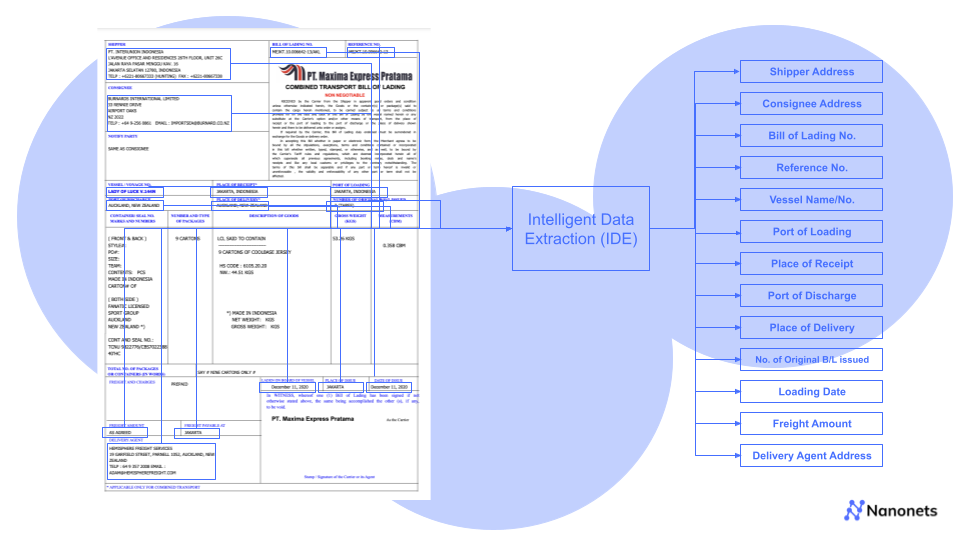
For over 5 decades now, optical character recognition or OCR software has most commonly been used to digitize files and digitally archive paper documents. OCR applications convert non-editable document formats such as PDFs or images to machine-readable formats that are both editable & searchable. With advancements in AI and machine learning, some of the best OCR software available today can even automate data capture workflows end to end from various business documents.
OCR softwares are quite the commodity today, with numerous players flooding the market. And assigning the title of "best OCR software" to any one particular OCR application or tool without any context on the use case or purpose would be a shot in the dark at best. It just doesn't make any sense.
So how does one go about choosing the best OCR software that's appropriate for their use case? We've got you covered... well mostly.
In this article, we have rounded up the leading OCR applications for a select list of popular use cases (handwriting recognition, accounts payables etc.) and document types (invoices, receipts, bank statements etc.). If you don't find your use case or document type covered below, check out the section on how to go about selecting a suitable OCR software or just talk to us to get a fair assessment and your best options.
And here's why this list is unbiased, dependable, and based on real-world OCR expertise:
So let's jump right in.
Here's the list of best OCR software grouped by specific use cases or popular business documents:
- Best OCR software for automating complex business processes
- Best OCR software for handwriting recognition
- Best OCR software for forms or tabular data
- Best OCR software for accounts payable
- Best OCR software for invoices
- Best OCR software for receipts
- Best OCR software for bank statements
- Best OCR software for generic PDF documents
What is OCR?
OCR or Optical Character Recognition is a technology that identifies & recognizes text within scanned documents, photos or images. OCR technology powers tools that can extract data from PDFs or scanned documents by converting it into machine-readable text/data that can be edited, displayed, searched electronically & stored more conveniently for further processing. There are tools available online, such as the Online OCR tool, that facilitate this conversion seamlessly.
Over the years, OCR has been increasingly adopted in many document-processing workflows that previously depended on manual data entry. OCR is used to extract data from all types of documents and send it to other business applications for further processing. Here's a deep dive into how optical character recognition works.
A brief history of OCR
In the early 1970s, Ray Kurzweil founded Kurzweil Computer Products, Inc., whose OCR product could recognize text printed in any font. He quickly realized that the best application for this technology would be a text-to-speech reading machine for the visually challenged. Later, in the 1990s, OCR was extensively used to digitize historical newspapers and legal documents.
Today OCR applications and products powered by AI & machine learning are available online and as APIs that can integrate seamlessly with other applications - e.g. Tesseract OCR, Google Vision and Nanonets.
They are used for automated data entry, pattern recognition, text-to-speech services, indexing documents for search engines, cognitive computing, text mining, and machine translation among various other applications.
Why is OCR software important for businesses?
While organizations are striving to turn paperless and automate business workflows, a large portion of business communication is still done through paper documents, PDFs or scanned files.
Important business documents such as invoices, POs, receipts, bank statements, contracts, government documents, large survey data, static documents and more are routinely received as physical paper documents or as PDF attachments via email. What follows is a tedious, often manual, process of digitizing them and then ingesting relevant data into ERP or other business software. This takes a lot of time, resources and is extremely error-prone
So here's the roundup of the best OCR software for a select category of use cases and document types. This list is based on the latest internal benchmarking research and inputs from customers/users as of May 2024.
We will attempt to keep this list updated each quarter. We are also looking to make this assessment as open and fair as possible. More on this soon!
Best OCR software for automating complex business processes
Google Document AI
Document AI enables developers to build precise processors for extracting, categorizing, and splitting documents. These processors automate mundane document processing tasks, enhance data extraction, and provide deeper understanding of both unstructured and structured document data.
It enables businesses to reduce manual entry, improve data accuracy, and accelerate workflows, ultimately driving smarter decision-making and operational efficiency across various industries.
Pros:
- Structures and digitizes information from documents to drive deeper insights using generative AI
- Powered by the latest foundation models, tuned for document tasks
- Works out of the box and does not require any training or customization
- It can effectively recognize and process a variety of document types, including handwritten notes, printed text, and complex layouts
Cons:
- Google's pricing structure can become expensive as the volume of documents increase
- Not suited for use cases that require custom AI algorithms
- Limited number of pretrained models
IBM Watson Discovery
IBM Watson Discovery is an advanced AI-powered intelligent document understanding and content analysis platform platform designed to unlock insights from unstructured data from documents, emails, reports, and websites efficiently.
With features like content mining, trend analysis, and anomaly detection, Watson Discovery enhances decision-making by providing actionable intelligence.
Pros:
- Highly accurate, particularly for clean and structured documents
- Truly enterprise-grade, trusted and scalable
- Saves a lot of time in analyzing documents and generates interesting insights from them
- Extracts complex information within acceptable accuracy rates
Cons:
- Pricing can be prohibitive for small to medium-sized businesses
- Needs better predefined queries to quickly analyse data
- The OCR tends to struggle with data that contains images
- Performance can lag when dealing with highly unstructured or noisy documents
Azure AI Vision
Azure AI Vision is a robust, cloud-based computer vision service leveraging deep learning algorithms to analyze visual content. Azure AI Vision enables businesses to automate workflows, enhance security, and extract actionable insights from visual data.
It offers advanced image and video analysis capabilities, including object detection, facial recognition, optical character recognition (OCR), and spatial analysis.
Pros:
- State-of-the-art OCR capabilities that generally produce high accuracy
- Supports a wide range of languages, making it versatile for global applications
- Easy to integrate with other Azure services like Azure Cognitive Services, Azure Blob Storage, and Azure Functions, allowing for seamless end-to-end solutions
- Robust security features, including compliance with various international standards
- Advanced features such as layout analysis, table recognition, and the ability to extract text from images with complex backgrounds
Cons:
- Not be the most cost-effective solution for smaller organizations or low-budget projects
- Training custom models can be complex and may require specialized knowledge, which could be a barrier for teams without AI expertise
- Depending heavily on other Azure services can create a tightly coupled ecosystem, making it challenging if you decide to switch platforms in the future
- The accuracy of OCR results can significantly degrade with poor-quality images, such as those with low resolution or high noise levels
- ertain features might be region-specific and not available globally, which could limit its utility for international applications
Best OCR software for handwriting recognition
Transkribus
Transkribus excels at converting historical handwritten documents into digital text with impressive accuracy. Its capabilities extend to a wide range of scripts and historical manuscripts, making it indispensable for researchers, archivists, and scholars.
Pros:
- Supports a wide range of languages and scripts
- Allows users to train the OCR model on specific handwriting styles or fonts, which significantly improves the accuracy for those particular texts over time
- Offers a suite of advanced features, such as layout analysis, named entity recognition, and keyword spotting, which are useful for researchers dealing with large volumes of texts
Cons:
- It may not perform as well as other OCR tools when dealing with modern printed documents
- The UI can be better and more intuitive
Handwriting OCR
Handwriting OCR excels in digitizing various handwriting styles and is particularly adept at recognizing cursive, printed, and mixed scripts. It supports diverse applications, from digitizing historical manuscripts to streamlining data entry processes in educational and professional settings.
Pros:
- Can handle a variety of document types, from letters to notes to scanned forms
Cons:
- The accuracy can drop significantly with poor handwriting, varied writing styles, or unconventional characters and symbols
- Struggles with documents that have complex layouts, such as tables, multi-column formats, or handwritten notes with interspersed drawings
Best OCR software for forms or tabular data
Amazon Textract
Amazon Textract leverages advanced machine learning to automatically extract text and data from scanned documents, accurately identifying and processing structured data, such as fields in forms and cells in tables. This allows businesses to efficiently digitize and analyze documents like invoices, tax forms, and contracts.
With support for diverse document formats and seamless integration with other AWS services, Amazon Textract is a powerful tool for streamlining document processing workflows. For more information check out this detailed breakdown of Textract.
Pros:
- Very affordable and extremely scalable
- Easy to use and setup when used along with AWS Services - seamlessly integrates with other AWS services, such as Amazon S3, Amazon DynamoDB, and AWS Lambda
Cons:
- Might struggle with very low-quality documents or heavily skewed/rotated text images, which can affect the overall accuracy of the OCR results
- Not possible to retrain custom or pretrained features in case of low accuracy
- Currently only supports English, Spanish, Italian, Portuguese, French & German
- Handwriting, Invoices and Receipts, Identity documents and Queries processing are in English
ABBYY Finereader
ABBYY FineReader is a powerful optical character recognition (OCR) software that transforms scanned documents, PDFs, and images into editable and searchable formats.It can also help compare documents, add comments and annotations and a host of other traditional PDF editor features.
ABBYY’s FineReader PDF streamlines document digitization, retrieval, editing, protection, sharing, and collaboration within a unified workflow - anything you need to turn scanned paper documents into their digital versions.
Pros:
- Allows for direct editing of recognized text
- Identifies differences between different versions of a document, which is valuable for proofreading and auditing purpose
- One time perpetual license
Cons:
- The mobile app does not match the desktop version in terms of functionality and accuracy
Best OCR software for accounts payable
Nanonets
Leveraging advanced machine learning models, Nanonets excels in extracting and interpreting textual data from invoices, POs and receipts, automating data entry and validation with high accuracy. This reduces manual workload, minimizes errors, and accelerates AP workflows.
Nanonets seamlessly integrates with existing ERP systems, offering real-time data synchronization, analytics, and compliance in financial document management. Automate data capture, build workflows and streamline existing AP processes completely
Pros:
- The ability to fine-tune and train custom OCR models on the platform
- Provides learnable decision engines to unlock business intelligence and make faster, more informed decisions
Cons:
- Limited out of the box integrations with accounting and ERP software
Rossum
Rossum excels in extracting data from diverse invoice formats with high accuracy and minimal manual intervention. By leveraging machine learning, Rossum's OCR intelligently captures and validates data, significantly reducing processing time and errors. Its seamless integration with existing financial systems ensures smooth data flow and enhanced productivity.
Pros:
- High accuracy in data extraction
- Solid integration capabilities
Cons:
- Less effective for more complex or non-standard document types (other than invoices or receipts)
- Initial setup can be somewhat complex
Best OCR software for invoices
Nanonets
Leveraging AI and machine learning, Nanonets can accurately extract, classify, and validate data from various invoice formats, significantly reducing manual data entry and error rates. Its robust platform seamlessly integrates with existing workflows and enterprise systems, ensuring swift and efficient processing of large volumes of invoices.
With easy-to-use APIs and customizable features, businesses can automate their invoice management, optimizing operational efficiency and accuracy.
Pros:
- Extracts meaningful information from unstructured data using zero-shot or zero-training data extraction algorithms that can be trained/retrained
- Suitable for businesses of various sizes, from small enterprises to large corporations
Cons:
- While pretty much any integration can be set up, native integrations are quite limited out of the box
Veryfi
Veryfi captures, extracts, and processes data from invoices with remarkable accuracy and speed. The platform supports various formats, instantly converting text from images and PDFs into structured data. Veryfi ensures seamless integration with accounting systems, making it an ideal tool for businesses seeking to streamline their invoice management processes.
Pros:
- It effectively extracts data from receipts, invoices, and other documents with minimal errors
- Integrates seamlessly with popular accounting and bookkeeping software out of the box
- Offers a mobile app to scan documents on-the-go
Cons:
- A bit more expensive than some competitors
- Limitations when it comes to less common document types
Best OCR software for receipts
Taggun
Taggun excels at accurately extracting and interpreting data from various receipt formats, ensuring seamless integration into digital workflows. Taggun's receipt OCR engine is at the core of popular spend/expense management software.
Other popular use cases for its receipt OCR include loyalty programmes, cash-back campaigns and anything related to leveraging zero-party customer purchase data.
Pros:
- High accuracy in extracting data from receipts and invoices
- Handles recognition of region specific data points in receipts - e.g. the Australian Business Number or the Brazilian CNPJ
- Offers real-time data extraction
- Quite cost-effective, providing good value for money
Cons:
- Can't handle documents other than receipts or invoices with similar accuracy levels
- Limited room for customization in terms of the data extraction models
Veryfi
Veryfi offers cutting-edge optical character recognition (OCR) technology tailored for receipt processing. The platform seamlessly converts text from images into structured data, categorizing expenses and providing real-time analytics. By streamlining expense management, Veryfi helps users maintain precise financial records effortlessly, ensuring compliance and reducing the risk of human error.
Pros:
- High OCR accuracy on receipts - probably one of the best in the industry
- Real-time data extraction
- Expense categorizations
Cons:
- A bit more expensive than some competitors
- Customization options might be limited for use cases beyond receipts or invoices
Best OCR software for bank statements
Ocrolus
Ocrolus specializes in automating banking and lending workflows with. Particularly adept at processing bank statements, pay stubs and IDs, Ocrolus leverages AI-driven OCR technology to accurately capture and interpret data from scanned documents and digital files. This streamlines the extraction of transactional information for financial institutions, lenders, and service providers.
Pros:
- Fraud detection
Cons:
- The cost factor can be a significant barrier for some potential users
Best OCR software for generic PDF documents
Adobe Acrobat DC
Adobe Acrobat DC is a leading PDF management software that offers comprehensive tools for creating, editing, signing, and sharing files. Part of the Adobe Document Cloud platform, it ensures easy access and file management, along with cloud storage solutions. Acrobat DC includes advanced features like OCR for text recognition, file conversion, and robust collaboration tools.
It can convert scanned documents and images into fully searchable and editable text. It will even recognize fonts and formatting, so the new PDF matches your original paper document. Users can edit documents within seconds of scanning them, add comments and feedback on them, compare two documents side by side, and much more.
Pros:
- The go to choice for anything PDF related or for anyone using Adobe apps/software
- Allows users to search the text in PDFs to find words or phrases and make edits on the spot
Cons:
- May not be the best for beginners with its overwhelming interface and feature set
- Can get expensive when compared to other PDF management tools with OCR capabilities
Tesseract OCR
Tesseract OCR is a leading open-source optical character recognition engine renowned for its high accuracy in text extraction. Tesseract supports over 100 languages and various output formats like plain text, searchable PDFs, and hOCR. With continuous community-driven improvements, Tesseract remains a top choice for developers and enterprises looking for reliable OCR solutions to digitize and automate document workflows efficiently.
Pros:
- Open-source and freely available
- Supports a large number of languages right out of the box
- Highly customizable - can train it with new languages or improve the accuracy of existing languages using your own datasets
- Strong community of users and developers
Cons:
- May not always provide the highest accuracy, particularly with more complex documents involving special characters, unusual fonts, or poor-quality images
- Generally performs poorly with handwritten text
- Can be slower compared to some commercial OCR solutions, particularly with large volumes of text or high-resolution images
Easy OCR
Easy OCR provides high accuracy and speed in recognizing text across various fonts, languages, and document types. It's particularly effective on generic PDF documents, where it excels in converting scanned pages, photographs, and complex layouts into editable and searchable text. Easy OCR supports multi-language recognition and offers robust features to handle noisy, low-resolution images.
Pros:
- Straightforward, user-friendly interface, ideal for users with varying levels of technical expertise
- High accuracy, especially for printed text, making it reliable for many common use cases
Cons:
- May struggle with accurately reading handwritten text
- Has trouble accurately processing documents with multiple columns, tables, or embedded images
How to choose the best OCR software for your use case?
If you're reading this section, I'm assuming that your use case hasn't been covered in any of the categories above or you have already checked out our OCR software recommendations and are looking for an alternative.
If you are looking for an alternative OCR software to any of our recommendations, we would strongly suggest that you benchmark any alternatives you check out against our recommendations in that particular category. Compare any OCR software alternatives of your choice against our recommendations on review platforms like G2 or Capterra.
Or just talk to us to get a fair assessment and your best options forward.
If your use case hasn't been covered in our list above, here's a checklist to help you come to make a decision:
- Check if software review sites like G2, Capterra or Gartner curate software for your category (e.g. spend management, medical coding, order processing).
- Next check out the comparative matrix, if any, published for that category - essentially comparing all software across key performance indicators.
- Shortlist those that mention data extraction, OCR, data capture etc. as a key feature.
- Or shortlist by ability to integrate with specific software - e.g. EHR software for medical coding/billing, or WMS applications for order processing workflows.
- If you have a very specific budget or at least a range, filter out all the OCR software or applications with OCR features that exceed that figure.
- If information on pricing isn't public, just drop a message to the respective sales team along with your budget details. If your budget matches their price points - you'll be sure to hear back from them. If not, you're probably not a right fit for that OCR service with respect pricing or use case.
- Negotiate a POC-type engagement with all the OCR software that you have filtered to this stage. If a provider is unwilling to do a POC - share the list of competitors/alternatives that have agreed to do a POC or negotiate at least for a paid POC.
- Once the POC is set up simultaneously test each software across a common sample of documents and try to integrate with ERPs and business software that are pertinent to your particular use case.
At the end of the POC period you should have a clear understanding of the following:
- The OCR software or applications with the highest accuracy rates, or with the fastest data extraction rates. Accuracy rates reported by OCR applications on their websites are more often than not simply marketing fluff.
- The extent, quality and nature of support that the OCR vendor can offer.
- The technical expertise required in-house to manage the OCR solution moving forward.
- The amount of documentation available to maintain the solution as well as the performance attained during the POC.
How we test or benchmark against other OCR applications
For all practical purposes we can't really test ALL the OCR software out there. So we restrict ourselves to a maximum of 30 software to serve as our consideration set each time we do this exercise - this includes the 17 software featured in the list above.
We maintain a comprehensive sample data set containing over 200+ varied documents such as invoices, receipts, bank statements, ID cards, medical prescriptions, material safety data sheets, different kinds of forms and reports etc. Each of these sample documents either tie back to a popular use case such as accounts payable or mortgage processing or popular document types such as invoices or receipts.
We then put our consideration set of OCR software to test on the entire data set mentioned above and record the output. Confidence scores are typically assigned to each output. A round of human review is done to compare actual OCR output against expected/ideal results. We assign scores for OCR accuracy, data extraction throughput, and processing time.
Broadly this is the methodology followed to measure/benchmark the OCR software listed above. While we do this exercise most regularly (every month) for the accounts payable use case, and document such as invoices and receipts specifically - we cover all 30 OCR software in the consideration set every 3-6 months.




